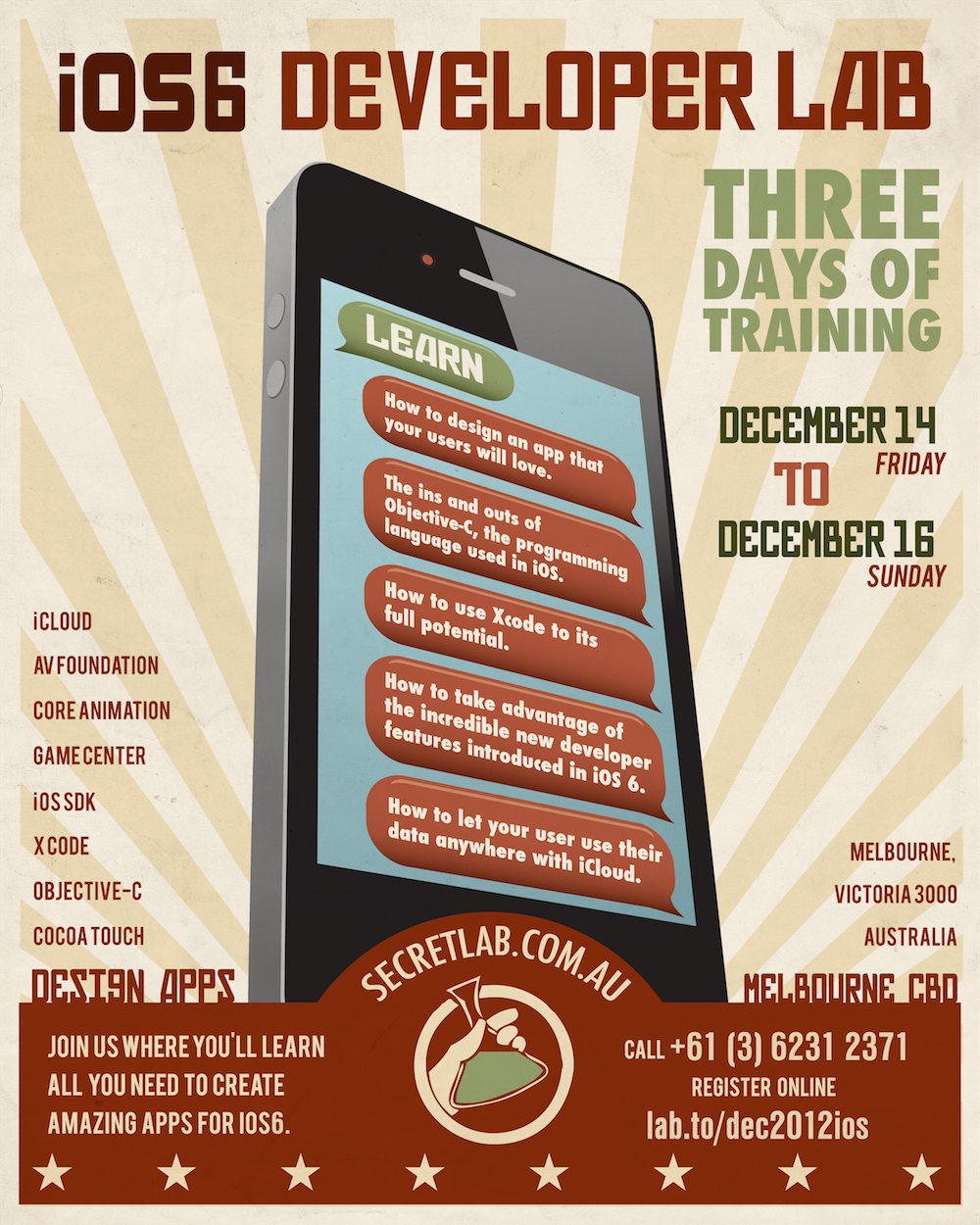So, here’s another something that we’ve been working on.
Captain is a lightweight library that lets you add hooks to your code, using JavaScript. We designed it for two reasons:
- If you’ve got a bunch of objects, each needing a small amount of custom objects, creating a subclass for each variation is cumbersome, and devising a sophisticated data-driven architecture is often overkill and sometimes impossible for your use case.
- Extremely rapid iteration, skipping the compile/install phase, is awesome.
Many of the games we make involve a lot of special-cased behaviour. Like all halfway decent developers, we try to minimise this, but sometimes you really just need a sprite that walks two feet left, three right, and does a twirl, and there’s nothing else in the game that you can generalise into a nice, reusable system.
We’ve already found some great results in allowing field-testers and non-programmers to make modifications to iOS applications by exposing certain resources to iTunes File Sharing. For example, if you’re writing an app that has a lot of sound effects, it makes your sound designer’s life a heck of a lot easier if they can open up iTunes and drop in a replacement sound file, and see how it sounds in your app without having to get another build.
What we ended up doing was using JavaScriptCore, which is the built-in JavaScript runtime on iOS, to create a very loose binding to Objective-C, and then allow Objective-C objects to delegate parts of their behaviour out to JavaScript.
Captain isn’t a scripting bridge. This means that it’s a slightly different thing to libraries like the excellent jscocoa. Most scripting bridges allow you to write entire apps in other languages, which is super cool. However, we really like Objective-C, and find that using the native language for the iOS platform is the best way to approach most things.
Captain, therefore, lets you expose very specific parts of your application’s behaviour to scripts, effectively creating a domain-specific language for your app. Plus, it’s all designed to be super lightweight.
An important note: Apple’s rules say your app isn’t allowed to get scripts from the outside world and run them. This means that you can’t use Captain to build a plugin architecture for your app, but you can use it during development to make your edit-build-compile cycles faster and more flexible.
How to use it
The most basic use case for Captain is when you want to run a JavaScript function, and get back whatever the function returned.
When you work with Captain, you first create a JSContext object, which serves as the execution environment for all of your scripts. You can create as many contexts as you like, but each one is kept separate from each other, and variables won’t be shared between them.
Creating a JSContext looks like this:



